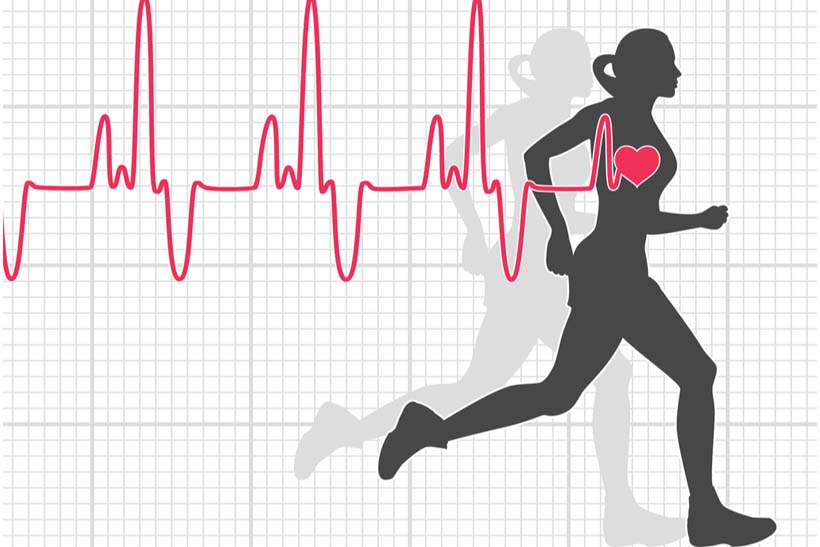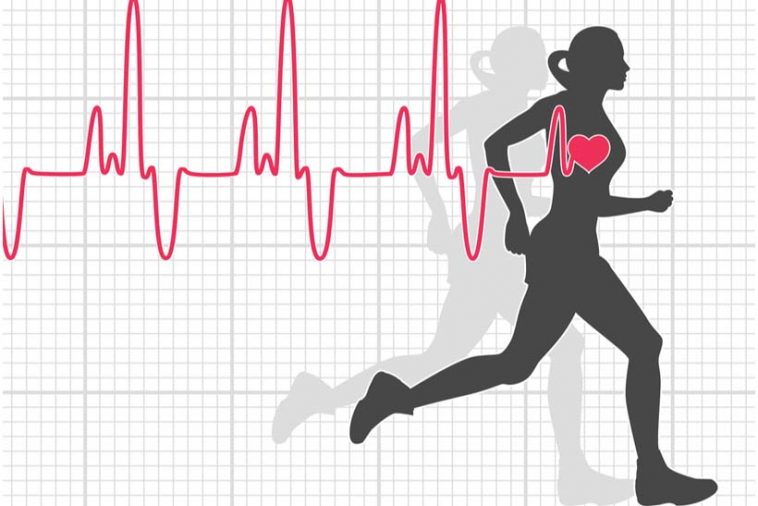- Like
- SHARE
- Digg
- Del
- Tumblr
- VKontakte
- Flattr
- Buffer
- Love This
- Save
- Odnoklassniki
- Meneame
- Blogger
- Amazon
- Yahoo Mail
- Gmail
- AOL
- Newsvine
- HackerNews
- Evernote
- MySpace
- Mail.ru
- Viadeo
- Line
- Comments
- Yummly
- SMS
- Viber
- Telegram
- JOIN
- Skype
- Facebook Messenger
- Kakao
- LiveJournal
- Yammer
- Edgar
- Fintel
- Mix
- Instapaper
- Copy Link
Introduction
 By Dr. Bomi Joseph
By Dr. Bomi Joseph
Our heart is arguably the most important organ in our body. It is a muscle that works tirelessly to supply all our tissues with oxygen and nutrients and it removes carbon dioxide and waste.
As with others muscles, there is a tremendous variation between individuals’ strength and capacity.
A professional athlete’s heart has steady, formidable pumping force that sends oxygen flowing through the tissues at a rapid rate.
Our body makes energy with a substance called ATP and when it gets used up, it turned into an inactive form called ADP.
Athletes are able to recycle ADP and convert it back into ATP much more quickly than the average person, giving them impressive endurance and power to run, jump and fight.
In order to make ATP the body need fuel (sugar) and oxygen. Supplying enough oxygen means good lung function and heart mass & pump stroke volume are critical.
“The strength of the heart can be trained and conditioned just like any other muscle,” says Dr. Bomi Joseph, Director of the Peak Health Center in California.
According to Dr. Joseph the ideal forms of exercise for heart training are running and swimming. Activities like walking or biking on relatively flat ground generally don’t get the heart rate up enough for any serious cardio capacity gains.
Dr. Bomi Joseph personally likes running since it can be done year-round and virtually anywhere, for free. He says that it really helps to have a wearable heartrate monitor or a smartwatch such as an apple Watch, FitBit or Samsung Galaxy device
Finding Your Maximum Heart Rate
“Go to a safe, traffic-free location and run as fast as you can for 3 minutes. Rest for three minutes, and then run as hard as possible again for 3 minutes. Note the highest heart rate from the second run. We’ll call that your max,” says Dr. Joseph.
“When you train,” says Dr. Joseph… “You really want to get your heart rate up high, to at least 80% of your maximum heart rate or higher. Not going ‘all out’ every day, but you want to raise the levels on up there a few times per week.”
Working out at higher than 80% of your Max Heart Rate burns serious calories because of the associated excess post exercise oxygen consumption (EPOC), or “afterburn.” It also conditions your heart to build strength and maintain mass.
Dr. Bomi Joseph’s Personal Training Regimen
This is the personal regimen of Dr. Bomi Joseph when he trains for races or improvement. It is not for everyone. It is an intense and vigorous workout plan so it is essential that if you have any doubts or underlying medical conditions that you ask your doctor before trying it yourself.
Monday
Mondays are for interval sprint training. Many gyms have treadmills and elliptical trainer machines with interval sprint routines built in. Start off by warming up by running at an easy pace for about 4 minutes. After you are warmed up, run approximately 8 to 10 different full-speed sprints of 30 seconds each, with a 1 minute “break” of slow gentle jogging in between each sprint. Conclude the session with a “cool down” period of gently jogging or walking for about 4 minutes.
Tuesday
Tuesdays are for easy, slow, gentle runs. Since you trained so hard the day before, today is not the day to worry about times or pacing. Just go for a jog. Don’t keep pace or keep score, just jog at a leisurely pace and try to enjoy yourself. When you feel like you’ve gone far enough, that’s it. Don’t push it.
Wednesday
Wednesdays are the cardiovascular “peak of your week” are when you go ‘all out.’ Give it everything you’ve got: pretend like you’re running in the Olympic finals for the gold medal. Do a slow, gentle warmup run for one mile. Then for the second mile, run as fast as humanly possible. As you run, pay close attention to your breath – filling your lungs as up fully and efficiently as you can.
Thursday
Rest day! Thursdays are a well-earned day of physical rest. All that sprinting is hard work and it is vital to give your system a chance to recuperate, lest it be “shocked” or exhausted from too much exertion.
Friday
Interval sprint training day, the same as Monday. Do anywhere from 8 to 10 sprints of 30 seconds duration each, with 30 to 90 seconds of gentle jogging in between sprints. Be sure to warm up and cool down: gently jog for a few minutes at the beginning and at the end of the interval sprints.
Saturday & Sunday
Sorry, but you don’t get the weekends off! Not if you are truly serious about strengthening your cardio capabilities. Each weekend day, you should take a long, slow gentle run of 30 to 60 minutes. As you get fitter you can move from the lower end of the range time range to the upper one. This will keep your heart busy and used to performing, while building heart muscle mass and energizing your body with oxygen and nutrients.
Tips for Recovery from HIIT Cardio Training
Running is great for the heart, can be a bit tough on the muscles and the joints of the feet, knees and hips. But don’t worry, as there are a number of good “hacks” and supplements that can help reduce any discomfort from the training:
- Stretching – Stretch, stretch, and then stretch some more! Running can cause stiffness in the legs or cause arthritis to flare up – and this becomes more noticeable after the age of 40. Dr. Bomi Joseph recommends gently stretching for at least twice as long as you run, if possible… both before and afterwards. This means that if you run for 30 minutes, you should optimally stretch for 30 minutes before and then 30 minutes afterwards or later in the day. This isn’t always possible, but the more, the better!
- Cold showers & ice baths – these can be a bit uncomfortable to take the plunge and get into, but some coaches and trainers swear that exposure to cold water can reduce post-workout inflammation. While there is some debate in the science community as to whether ice baths are effective for inflammation, new evidence suggests that cold water helps generate new mitochondria, or cellular energy circuits.
- Adequate carbohydrate intake – running and especially sprinting burns a lot of calories and it can deplete glycogen in your muscles. As you run more, you may need to eat more. If you go for an especially hard run, you can consume 50 to 100 grams of carbohydrate 30 minutes after your finishing your run, then add another 50 to 100 grams an hour after that to kickstart the glycogen replenishment. Be sure to consume adequate protein and overall calories, too, as if you don’t you could end up losing muscle mass.
- Turmeric, Boswellia & UC-II Collagen – Curcumin, the antioxidant polyphenol in turmeric root is great for general aches and pains, as is an herb called boswellia a.k.a. Indian frankincense. For people with joint aches and pains caused by arthritis, research suggests that taking a daily capsule of a specialized collagen supplement called UC-II (Undenatured Collagen Type 2) on an empty stomach can reduce discomfort after several weeks of use. A study of 55 patients with knee pain who took UC-II reported increased leg flexibility and less joint pain after strenuous exercise.
Why Deep Health Takes Time & Effort to Develop
Is it possible to lose weight or gain skeletal muscle mass in several weeks or just a few short months. You could hit the weights or cut the carbs and see visible results that you would feel satisfied with and inspire you to keep going. But when it comes to permanently increasing your overall level of cardio strength, oxygen delivery capability, a longer-term effort may be required.
Dr. Bomi Joseph is currently working on a home ‘smart scale’ device paired with an iPhone app, called the Deep Health Device. It measures internal factors like weight, muscle, fat and heart health and overall health in great detail. It assigns an overall ‘health score’ to home users, which can be raised with extended diet and fitness efforts. It also sends more sensitive diagnostic information, such as heart irregularities or warnings, directly and confidentially to healthcare providers. Going by simple metrics like weight and waist size doesn’t paint the complex picture of an individual’s health, especially their heart strength.
Dr. Joseph has looked over data from over 57,000 people, some studied for over 34 years, and he says that cardio health generally takes consistent, long-term effort to improve. HIIT training, as outlined above, is one of the fastest and most fruitful ways to improve it. As the heart health improves, people experience lower body fat levels and especially visceral, abdominal fat which is the most unhealthy & dangerous. It also tends to increase levels of aerobic fitness, which is the body’s ability to deliver oxygen to the tissues and use it. Improving cardio health is always good so long as you don’t over train or under eat, and thus lose muscle in the process.
Conclusion
Every journey has a starting point no matter how humble it is. Be grateful for what you can already do, and take care and caution as you run towards peak health with high intensity interval training (HIIT)!
About Shannon Clark
Shannon holds a degree in Exercise Science and is a certified personal trainer and fitness writer with over 10 years of industry experience.

